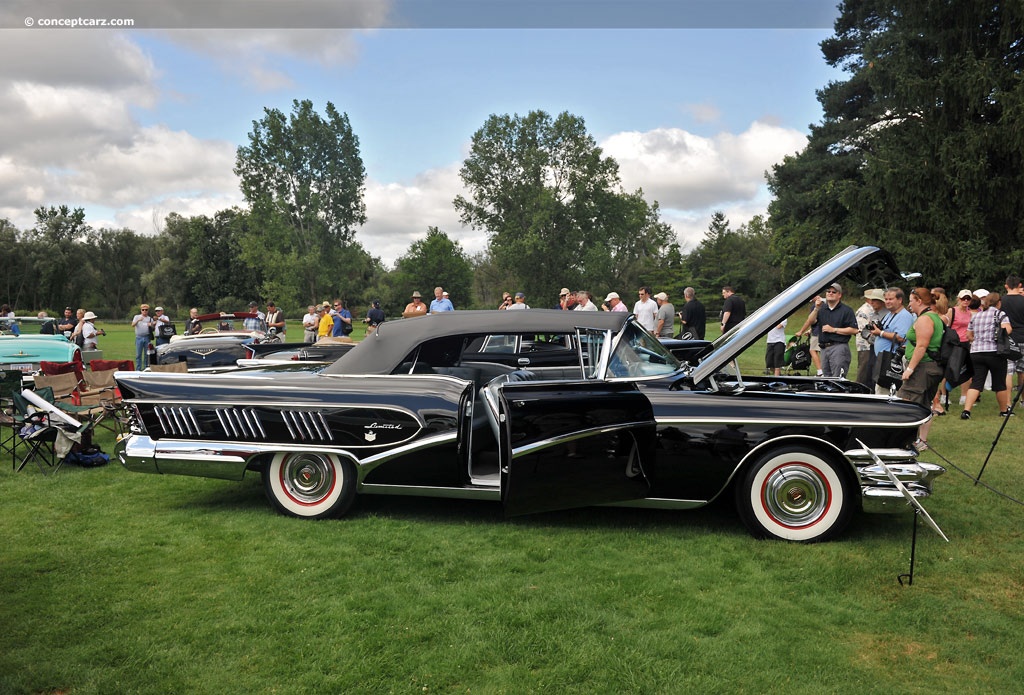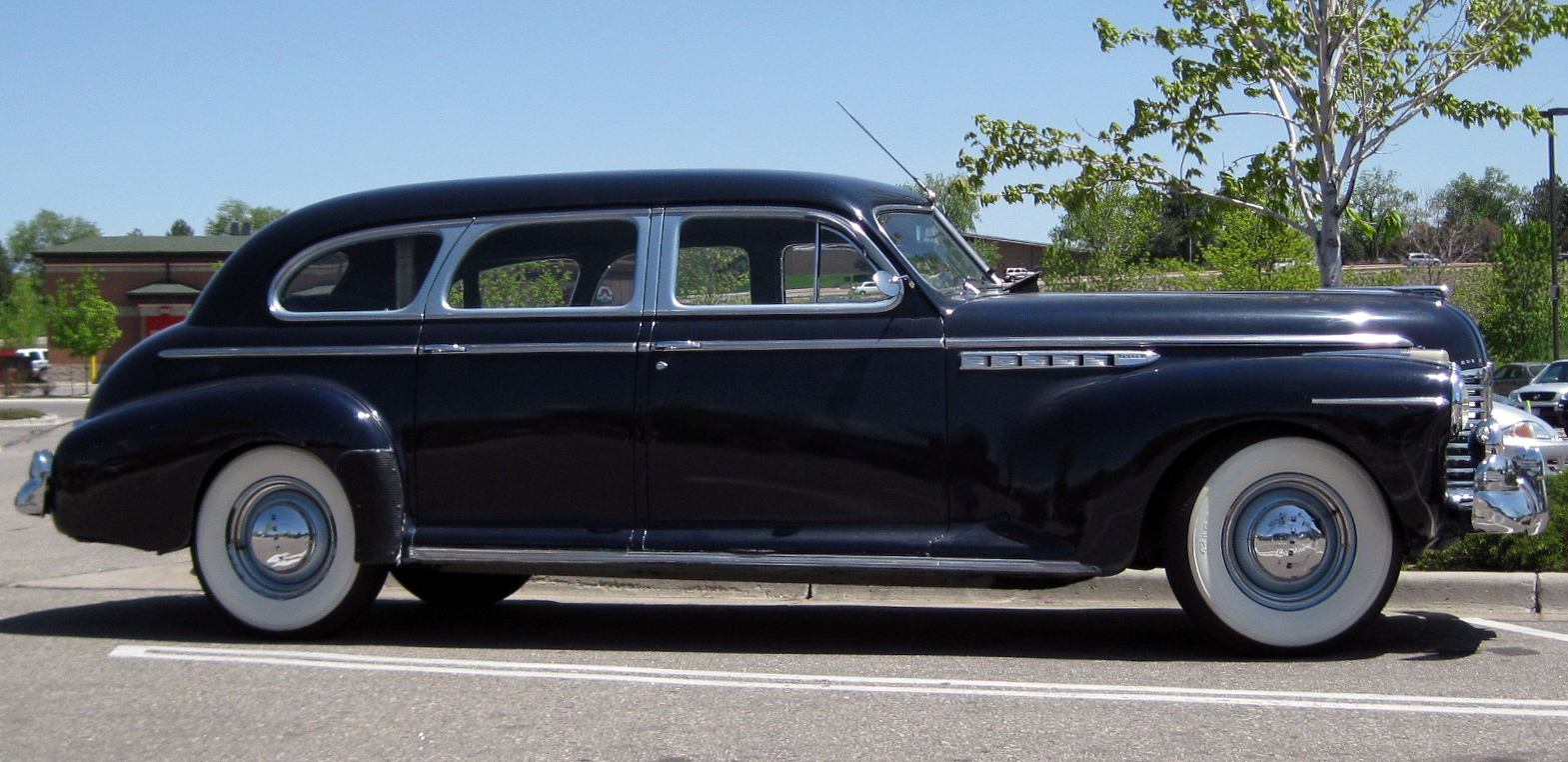Buick Limited
The Buick Limited was a series of cars that have been manufactured in the model years 1931 to 1942 by Buick as the successor to the 129 series in the USA. Until 1935, the series was only 90 series from 1936, the term Limited to do so. In model year 1940, there was the Limited not only as Series 90, but also as Series 80, previously used as a designation for the Roadmaster.
After the war, the Limited emerged as Series 700 only in model year 1958. The Limited has always been the top model of the Buick palette. From 1965 Limited was only used as a nickname for the respective highest trim level other model series.
Series
Series 90 (1931-1935)
Buick Series 90 Model 95 Phaeton (1931 )
1931 Buick offered its top class model 90 series with a large number of eight-cylinder engine with 5650 cc and a power output of 104 hp ( 76 kW) at 2800 min -1. The wheelbase was the largest of its model range with 3352 mm.
There were eight different set-ups available: a roadster, a convertible and a country club coupe with two doors and sedans with five or seven seats, a seven-seater Phaeton and a seven-seater Pullman sedan with four doors.
The following year, the wheelbase grew to 3404 mm on request and there was a " high-performance engine " with 113 bhp (83 kW). Two bodies were also this: a two-door sedan and a two-door Phaeton convertible.
1933, the appearance of the car was completely redesigned. The grille was given a slightly inclined backwards slight V-shape, the fender a more elegant swing, the hood on each side of three large vertical ventilation flaps and the car was lower. The wheelbase increased to 3505 mm, and the " high-performance engine " accounted for again. Only five different bodies were available: four-door sedans with five or seven seats, a sedan and a coupe with two doors and the Pullman limousine.
After 1934, the Series 80 was no longer offered, inherited the 90 series, the wheelbase was reduced to 3454 mm, the Coupé, the Cabriolet and the Phaeton Cabriolet this series. The engine output increased to 116 hp (85 kW). The striking ventilation flaps on the hood were gone again in favor of three narrow horizontal air vents.
The following year, the car got a vertical center bar and grille on all models of the Series 90 were given safety glass window. Technically and in the superstructure, nothing changed.
In five years, 43 321 copies were created.
Limited Series 80 and 90 ( 1936-1942 )
Buick Limited ( 1937)
From 1936, the Series 90 was nicknamed Limited. This name should indicate the exclusivity of the series (limited production numbers). The engine the car was divided again with the slightly smaller Roadmaster and this time with the even smaller Century. He had 5247 cc and developed an output of 120 hp ( 88 kW) at 3200 min -1.
The wheelbase was increased again to 3505 mm and there were only four bodies: four-door sedans with five or seven seats, a classic sedan with hatchback and the Pullman limousine available.
In the following year the engine output increased to 130 hp ( 96 kW ) and the grille was again horizontal chrome bars next to the chrome vertical chrome bar.
In 1938 the classic sedan was no longer offered and the engine performance of the other models rose to 141 hp (104 kW). The wheelbase of the car grew to 3556 mm.
1939, did not change anything in the art, but the frame of the windshield and rear window are made of stainless steel. The Pullman limousine got a retractable glass between the driver's seat and passenger seats.
In 1940 there were in addition to the 90 series even the series assumed by Roadmaster 80 as Limited. The Series 80 was completely revised with 3378 mm wheelbase smaller than the unadjusted series from the previous 90 Stylistically, all bodies. They had no running boards, but integrated in the front fenders headlights. The grille had horizontal chrome bars and had a broad, in the middle of highly elevated form.
The Series 80 offered six different four-door bodies: Phaeton cabriolets with a step or hatchback, sedans, with or without a separate boot and classic limousines in Normal and Sport versions. The Series 90 again had the three known structures from the previous year.
In model year 1941, the headlight housings were completely absorbed into the front fenders, which had increased in volume. The wheelbase decreased to 3531 mm. The engine output increased to 165 hp (121 kW). The Series 80 was no longer offered, but the 90 series inherited from her the classic limousine.
1942, the last year of pre-war production, and the Limited got again a new face. The flat, horseshoe-shaped radiator grille was now vertical chrome bars again. After the war, the Limited was initially not more hung up.
In seven years, created 4316 copies of the series 80 and 16 106 units of the 90 series
Limited series 700 (1957-1958)
Buick Limited Series 700 Model 756 Cabriolet ( 1958)
Along with the completely redesigned model lines offered Buick from the autumn of 1957 again a Limited as the top model to. The front of the vehicle revealed a grille over the entire width of the vehicle stood atop the twin headlights. The tail fins grew to gigantic proportions and at the sides of the rear doors and rear fenders, there were wide areas with 15 slanted chrome trim.
The new 700 series had, as the sister models of the Series 60 and Series 75, a V8 engine with 5965 cc and 300 hp ( 221 kW) at 4600 min -1. The wheelbase was, as in the Roadmaster, 3239 mm.
Three body styles were offered: a four-door hardtop sedan, two-door hardtop coupe and a two-door convertible. In the following year the Electra 225 replaced the Limited.
In the only production year Until summer 1958 7436 copies 700 series
Limited ( from 1965)
From 1965 onwards, the respective top models of the Buick series were given the nickname Limited, such as the Electra 225 or Century Limited. This name replaced the former name of the top models from the Custom.









